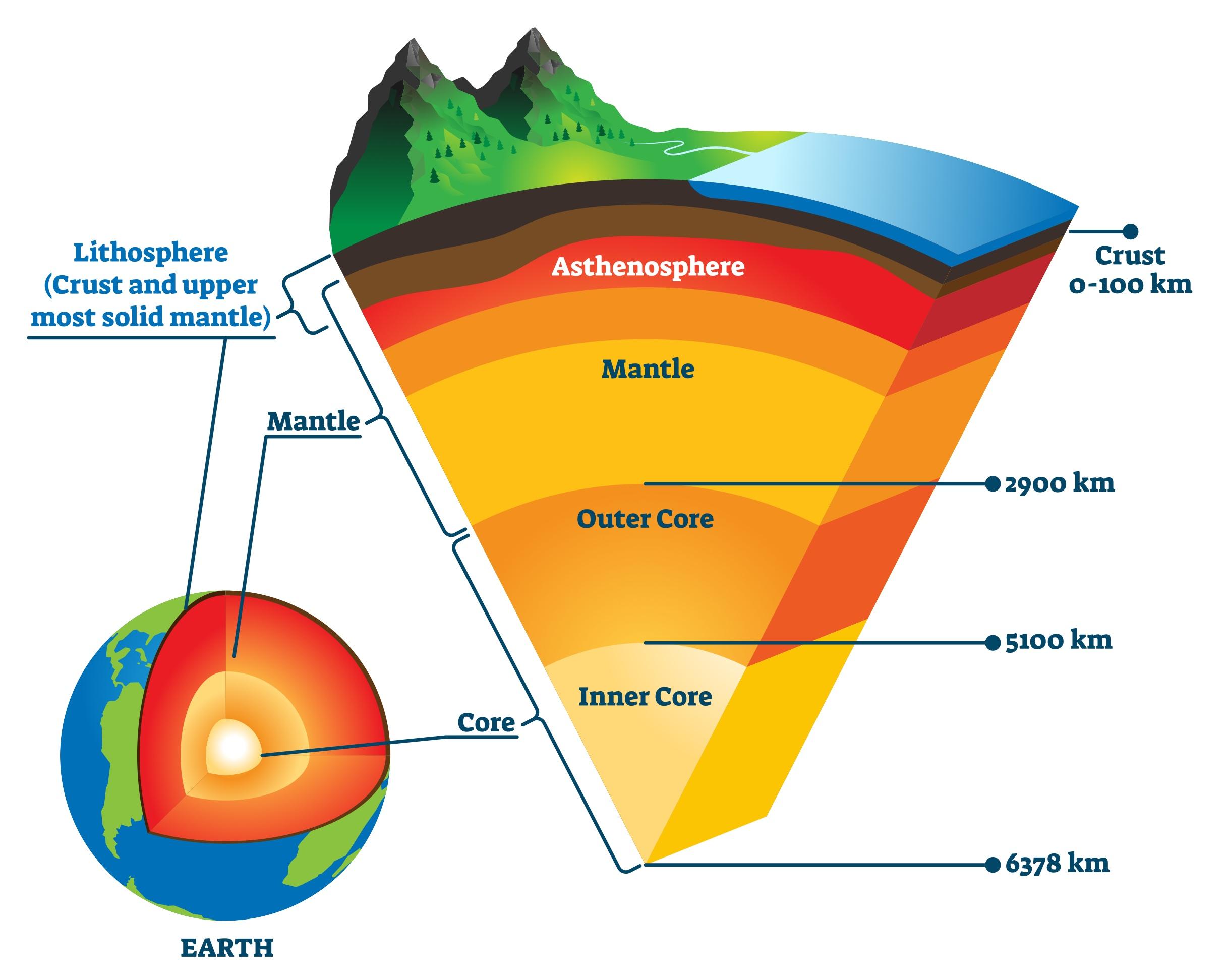
Earth Structure
The structure of the Earth is a complex arrangement of layers, each with distinct physical and chemical properties. Understanding these layers is crucial for comprehending geological processes, including plate tectonics, earthquakes, and volcanic activity. The Earth can be divided into four main layers: the crust, the mantle, the outer core, and the inner core.
1. Crust
The crust is the outermost layer of the Earth and varies in thickness from about 5 kilometers (3.1 miles) beneath the oceans (oceanic crust) to about 70 kilometers (43.5 miles) beneath continental regions (continental crust). It is primarily composed of lighter elements such as silicon, aluminum, and oxygen. The crust is divided into two types:
- Oceanic Crust: This type is thinner and denser than continental crust, primarily made up of basaltic rocks.
- Continental Crust: This type is thicker and less dense, composed mainly of granitic rocks.
The boundary between the crust and the underlying mantle is known as the Mohorovičić discontinuity (or “Moho”), where there is a significant change in seismic wave velocity due to differences in rock density.
2. Mantle
Beneath the crust lies the mantle, which extends to a depth of about 2,890 kilometers (1,800 miles). The mantle constitutes approximately 84% of Earth’s total volume and is composed mainly of silicate minerals rich in iron and magnesium. It can be further divided into:
- Upper Mantle: This includes the asthenosphere, a semi-fluid layer that allows for tectonic plate movement.
- Lower Mantle: This region behaves more like a solid due to increased pressure but can still flow over geological timescales.
Convection currents within the mantle are driven by heat from radioactive decay and residual heat from Earth’s formation. These currents are responsible for moving tectonic plates on the surface.
3. Outer Core
The outer core lies beneath the mantle at depths ranging from about 2,890 kilometers (1,800 miles) to approximately 5,150 kilometers (3,200 miles). It is composed mainly of liquid iron and nickel and plays a critical role in generating Earth’s magnetic field through its convective motion combined with rotation—a process described by dynamo theory.
4. Inner Core
At Earth’s center lies the inner core, which extends from about 5,150 kilometers (3,200 miles) to approximately 6,371 kilometers (3,959 miles) below Earth’s surface. The inner core is solid due to immense pressure despite extremely high temperatures reaching up to 5,400°C (9,800°F). It consists primarily of iron with some nickel and possibly other light elements
Good
ReplyDeleteGood work
ReplyDelete